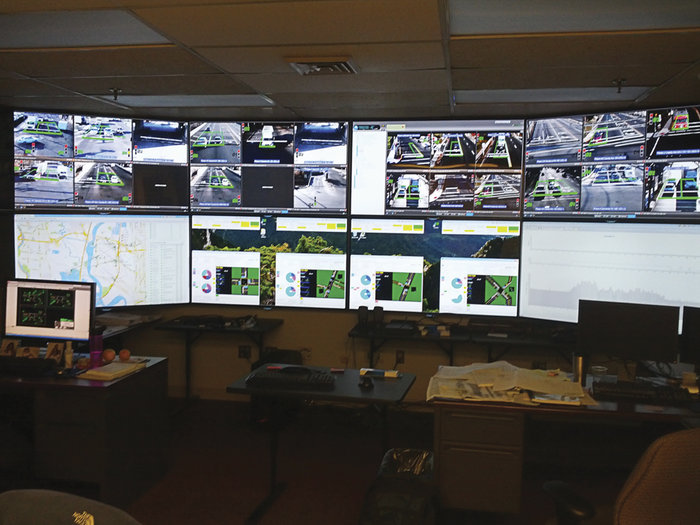The New Jersey Meadowlands Commission (NJMC) has been awarded a $10 million grant from the U.S. Department of Transportation to install 128 traffic signals in 40 square miles of the Meadowlands region. It is called the Meadowlands Adaptive Signal System for Traffic Reduction (MASSTR) and represents a step forward in New Jersey from a nearly 40 year-old system to a new one that adjusts traffic signals based on changing flows of traffic.
“The fact that hundreds of thousands of people are going to be saving time is what matters most to me,” said NJMC Chief of Transportation David Liebgold.
According to NJMC Public Information Officer Brian Aberback, MASSTR is the first adaptive signal system of its kind in New Jersey and the largest system to be implemented at one time in the country. Traffic lights will now be synchronized as they are in New York City.
Liebgold pointed out that consumers are constantly replacing their personal electronic devices, yet the traffic system was decades old, so it was time that a change was implemented.
The $10 million grant represents 80 percent of the project’s total $12.5 million cost, the rest of which will be provided by privately-funded developers.
Meet the MASSTR
The objective of the project is to efficiently reduce congestion, delays, travel time, fuel consumption, and airborne emissions in the Meadowlands region. MASSTR dates back to a 2005 transportation plan designed to make improvements whose result was a revolutionary traffic system.
Rather than involving street widening that often adds travel time for drivers, MASSTR adjusts traffic signal times based on the regional flow of traffic, replacing fixed times that the antiquated system used. Installation of the MASSTR system requires adding advanced traffic signal control components to existing signal cabinets, and mounting wireless radios and antennas to traffic signal poles.
According to a fact sheet on MASSTR, the system will benefit more than 400,000 private, public and commercial vehicles daily. It is also expected to annually reduce vehicle delays by 1.2 million hours, gasoline consumption by more than 1.2 million gallons, and greenhouse gas emissions by more than 11,000 tons.
“The fact that hundreds of thousands of people are going to be saving time is what matters most to me.” – NJMC Chief of Transportation David Liebgold
____________
The system will be completed in five phases. Phase 1 in the Secaucus area involving 29 intersections that stretch to Paterson Plank Road, Harmon Meadow Boulevard, County Avenue and Secaucus Road, was completed earlier this year. Phase 2 in the southwest Meadowlands region, Harmon Meadow area, and Westside Avenue will be 75 percent completed in April and the remainder will be completed in either June or August. Phase 3 in the northwest Meadowlands region will be completed this spring. Phase 4, for Route 1 & 9, goes out to bid in April. Phase 5 is Route 46.
All phases are set to be completed by summer 2014. The first four phases consist of 115 signals that will be completed by December. Phases 1 to 3 are wireless, versus the last two which are fiber optic.
Secaucus residents have been getting the green light more than usual thanks to MASSTR. The busiest intersection is Paterson Plank Road and Plaza Drive at the entrance/exit to Harmon Meadow that has 55,000 vehicles going through daily. MASSTR has alleviated traffic in that congested area by adjusting signals to the large number of vehicles.
Since the completion of Phase 1, Liebgold said he has “absolutely” noticed a difference.
For an interactive map of the locations that will be or are underway with the project visit www.MASSTR.com.
The epicenter
Traffic conditions as well as signal operations are monitored and controlled at the NJMC Complex where 30 signals are currently operated. Four full-time employees will operate the system once completed and a contractor will be on call.
“Once the system is complete we’ll just be operating,” said Liebgold.
Traffic signals needing repairs can be identified from the NJMC Complex.
“On the adaptive system we have an email system so if a traffic light goes down or if a setting is wrong it’ll email us right away,” said Liebgold. “We’re able to make a change without affecting traffic flow at all.”
After a year of use, NJMC will assess how much time drivers saved versus the old system.
Vanessa Cruz can be reached at vcruz@hudsonreporter.com
